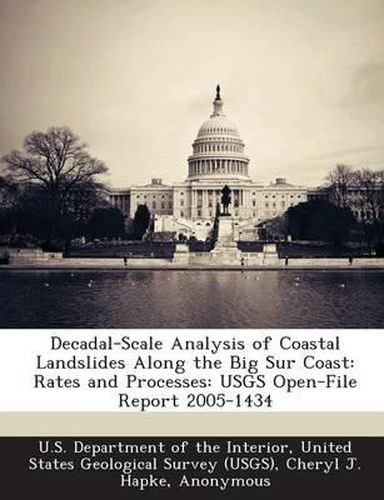Readings Newsletter
Become a Readings Member to make your shopping experience even easier.
Sign in or sign up for free!
You’re not far away from qualifying for FREE standard shipping within Australia
You’ve qualified for FREE standard shipping within Australia
The cart is loading…






Landslides in the coastal mountains of Big Sur in Monterey and San Luis Obispo Counties are common, especially during the winter months. These frequent landslides regularly disrupt Coast Highway 1, by blocking the highway with boulders and/or debris, or undercutting the roadway. Historical documentation of landslide activity in this area indicates slide activity closed portions of the road prior to its completion in 1937. The California Department of Transportation (Caltrans) maintains the Coast Highway 1 corridor and recently established the Big Sur Coast Highway Management Plan (CHMP) to develop management practices that will best maintain the highway while minimizing impact on the nearshore environment of the Monterey Bay National Marine Sanctuary (MBNMS) just offshore. One issue of concern is that deposition of the landslide material in the MBNMS may have a negative impact on nearshore biological communities. While some deposition of material from landslides is natural, some of the road re-opening and slope stabilization practices generate additional material that also needs to be disposed of. In order to better understand the spatial and temporal distribution of sediment input from landslides along the Coast Highway 1 corridor, a study was conducted to measure the long-term volumetric sediment yield and the history of active slopes. While this study provided both Caltrans and the MBNMS with valuable data on the locations and amount of sediment yield, it provided little information on the processes and rates by which this material is delivered to the nearshore. Long-term input rates were calculated but because catastrophic movement on these large slides is highly episodic, the averaged rates provide little information as to how much material may be eroded or deposited during a given year or over the course of a decade. The purpose of the present study is to document the rates and processes of landslide movement and sediment delivery along three specific landslides: Hurricane Point, Big Slide-Pitkins Curve, and Grayslip. The primary goals of the research are to quantify the short-term (decadal) rate of movement of material within each of the landslide complexes, to analyze how the landslide evolves morphologically through time, and to produce decadal-scale maps of the distribution of losses and gains in the landslide to determine how much sediment is deposited into the MBNMS (or removed by trucking).
$9.00 standard shipping within Australia
FREE standard shipping within Australia for orders over $100.00
Express & International shipping calculated at checkout
Landslides in the coastal mountains of Big Sur in Monterey and San Luis Obispo Counties are common, especially during the winter months. These frequent landslides regularly disrupt Coast Highway 1, by blocking the highway with boulders and/or debris, or undercutting the roadway. Historical documentation of landslide activity in this area indicates slide activity closed portions of the road prior to its completion in 1937. The California Department of Transportation (Caltrans) maintains the Coast Highway 1 corridor and recently established the Big Sur Coast Highway Management Plan (CHMP) to develop management practices that will best maintain the highway while minimizing impact on the nearshore environment of the Monterey Bay National Marine Sanctuary (MBNMS) just offshore. One issue of concern is that deposition of the landslide material in the MBNMS may have a negative impact on nearshore biological communities. While some deposition of material from landslides is natural, some of the road re-opening and slope stabilization practices generate additional material that also needs to be disposed of. In order to better understand the spatial and temporal distribution of sediment input from landslides along the Coast Highway 1 corridor, a study was conducted to measure the long-term volumetric sediment yield and the history of active slopes. While this study provided both Caltrans and the MBNMS with valuable data on the locations and amount of sediment yield, it provided little information on the processes and rates by which this material is delivered to the nearshore. Long-term input rates were calculated but because catastrophic movement on these large slides is highly episodic, the averaged rates provide little information as to how much material may be eroded or deposited during a given year or over the course of a decade. The purpose of the present study is to document the rates and processes of landslide movement and sediment delivery along three specific landslides: Hurricane Point, Big Slide-Pitkins Curve, and Grayslip. The primary goals of the research are to quantify the short-term (decadal) rate of movement of material within each of the landslide complexes, to analyze how the landslide evolves morphologically through time, and to produce decadal-scale maps of the distribution of losses and gains in the landslide to determine how much sediment is deposited into the MBNMS (or removed by trucking).